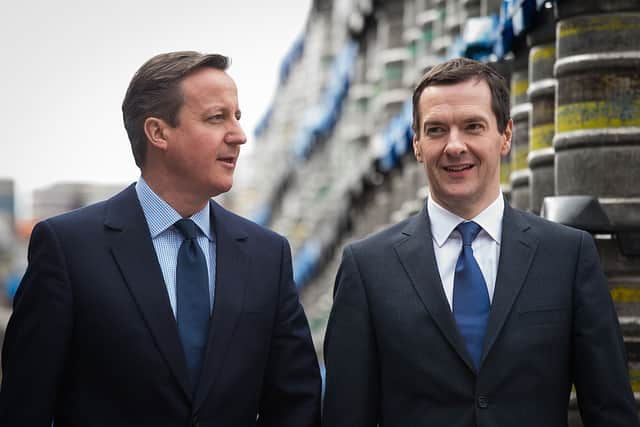What is austerity? What does it mean UK, is it good for economy, what happened last time - ahead of new Budget
and live on Freeview channel 276
This article contains affiliate links. We may earn a small commission on items purchased through this article, but that does not affect our editorial judgement.
The Chancellor of the Exchequer Jeremy Hunt will deliver another budget today (17 November) as the Rishi Sunak administration seeks to rescue the UK economy following the disastrous mini budget announced by Liz Truss and Kwasi Kwarteng.
The previous Conservative government’s swathe of unfunded tax cuts crashed the value of the pound, almost led to a run on pension funds, and has contributed to a big hike in interest rates on mortgages. Government borrowing costs have also become more expensive, making it harder for the current Treasury to bridge a major gap in its balance sheet.
Advertisement
Hide AdAdvertisement
Hide AdWhile Hunt is expected to provide some cost of living support for the UK’s poorest and most vulnerable households, the Chancellor is also going to - in his words - “balance the books” with tax hikes and public spending cuts. It comes after inflation soared again in October 2022, reaching 11.1% on the Office for National Statistics CPI.
The phrase Hunt has used echoed those that were made by David Cameron and his Chancellor George Osborne during the coalition government of the early 2010s. The Conservative-Liberal Democrat administration pursued a policy of austerity after getting into power in the wake of the 2008 financial crisis.
But is austerity - and what does it mean for the UK economy? Here’s what you need to know.


What is austerity?
Austerity is defined by the Cambridge Dictionary as: “The condition of living without unnecessary things and without comfort, with limited money or goods, or a practice, habit, or experience that is typical of this.”
Advertisement
Hide AdAdvertisement
Hide AdA more politics-focused definition of the term is: “A situation in which a government spends as little money as possible because of bad economic conditions.”
Essentially, it is a period of spending cuts or tax hikes or both. A government may consider austerity as a policy if it has been running a budget deficit - i.e. it is having to borrow money to fund public spending - at a rate that is adding to the national debt (the money that builds up after years of deficits) at an unsustainable rate.
Typically, this sort of scenario occurs after a major financial shock. For example, the UK national debt grew massively during World War Two as a result of the country having to run a wartime economy. It led to years of austerity - although it was not as harsh as it was during the 2010s.
What happened under austerity during the 2010s?
When the Conservative-Liberal Democrat coalition government that was headed up by David Cameron came to power in 2010, the economy was in a state of recovery following the 2008 financial crisis. The Conservatives had beaten Labour to become the largest party by rubbishing their rivals’ economic record.
